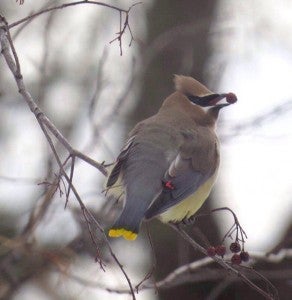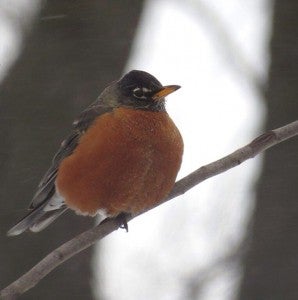Red-winged blackbirds sing, give a voice to nature
Published 9:00 am Sunday, April 6, 2014
My neighbor Crandall stops by.
“How are you doing?” I ask.
“Everything is nearly copacetic. I’m still dieting religiously. I eat whatever I want and then pray that I won’t gain any weight. We’ve been getting some precipitation. Pop said he could tell by the cows. If the cows were lying down, it was going to be clear. If they were standing, it would rain.”
“What if some of the cows were lying down and some were standing?” I say.
“That meant it might rain and it might not. The neighbor always got more rain than we did when I was a kid.”
“Why was that?” I ask.
“The neighbor had more land. I remember one year when we really needed the rain. It started to sprinkle and Pop called the family indoors so all that every drop of rain would hit the ground. I just bought a lot in town. I wanted to build a house. The city told me that I had to leave a 10-foot setback on each side of the lot. My lot is only 30 x 100 feet. That means if I build a house, it could be only 10-feet wide.”
“Yes, but 80-feet long,” I add. “Are you still going to build?”
“Yes, but not a house. I’m building either a bowling alley with one lane or an archery range.”
Nature by the yard
The sweet smell held echoes of rain.
Red-winged blackbirds sang, happy to be somewhere.
The yard Argus, a blue jay, called in protest.
Birds give a voice to nature.
Alexander Pope wrote, “Hear how the birds, on every blooming spray, with joyous music wake the dawning day.”
Q and a
Harlan Lutteke of Alden asked how he might identify a coyote. Coyotes are often mistaken for medium-sized domestic dogs. The fur varies in color from light brown to gray, and a coyote has long ears, a long, pointed face and a bushy black-tipped tail that it holds low and pointed to the ground. Coyotes usually only hold their tails horizontally when displaying signs of aggression. Due to their thick coat, coyotes tend to look larger than they actually are. Some coyotes could be confused with foxes. Foxes run with their tails held straight out, while coyotes run with their tails pointed towards the ground.
Harlan Lutteke also asked how many babies a raccoon has. The mating season is February and March, and the male raccoon travels long distances to mate with as many females as possible. The females find shelter in hollow trees or dens (groundhog burrows, culverts, chimneys or under buildings). After a 63-day gestation period, the female gives birth to two to six young. Once they reach four to six months of age, young raccoons live on their own.
“What preys upon bald eagles?” There are several threats to eagles and their young. Eagles fly into utility wires and are hit by automobiles. Predators such as raccoons or great-horned owls could get into the nest and kill the young. Lead in their food could kill eagles
“What do robins eat when there are no earthworms?” They feed on crabapples, mountain ash berries, acorns, apples, cherries, dogwood fruit, poison ivy berries, honeysuckle, juniper, mulberry, pyracantha, serviceberry, sumac, woodbine berries, grapes, fruit from the Virginia creeper, hawthorn (thornapples), hackberries and viburnum (highbush cranberry). You could try feeding a robin by putting out trays of chopped apples, blueberries, strawberries, raspberries, raisins, grapes or cherries on the ground. There is a good chance that the starlings will beat the robins to the grub. Robins might also eat suet, mealworms and peanuts. This spring, cedar waxwings and American robins have found our hawthorn tree to be a fine eatery.
“Should I paint a birdhouse?” While cedar houses are durable and don’t require painting, pine or plywood birdhouses can be made more weatherproof and durable with paint. Birds aren’t picky about color, but choose natural, camouflaged colors such as gray, dull green, brown or tan to blend into its environment. Stay away from black or dark colors that absorb heat. Use non-toxic stains or varnishes. Use water-based latex paint and avoid lead-based or creosote paints that may be toxic. Consider alternative, eco-friendly paints or opt for natural stains rather than paints. Perches aren’t needed or advised.
Nature lessons
Argos was a giant in Greek mythology who had 100 eyes, no more than two of which were closed at the same time. That made him an excellent sentry. When he was killed by Hermes, the goddess Hera gave his eyes to her favorite bird, the peacock.
Thanks for stopping by
“Let the water teem with living creatures and let birds fly above the earth across the expanse of the sky.” – Genesis 1:20
“Determine never to be idle. No person will have occasion to complain of the want of time who never loses any. It is wonderful how much may be done if we are always doing.”–Thomas Jefferson
Do good.
Al Batt of Hartland is a member of the Albert Lea Audubon Society. Email him at SnoEowl@aol.com.





